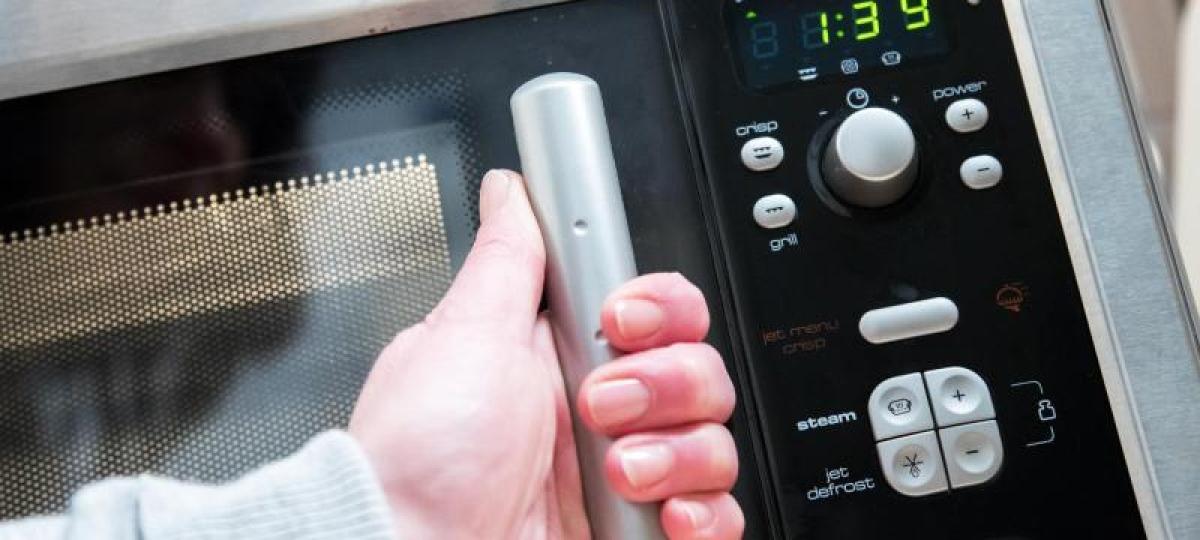Radiation, nutrients, risks – the most important facts at an overview

Watch up, plates in, flap – the meal is ready. Microwave devices heat food in a matter of seconds and help to save a lot of time in everyday life. But their way of working sounds like a cheap magic trick that has to be a bit lazy. Again and again the claim that the use of the devices is circulating is always harmful. Answers to the most important questions.
The devices are equipped with a vacuum tube that converts electrical energy into electromagnetic waves. These so -called microwaves are directed into the interior of the device and are distributed there because they are reflected on the walls several times. « The waves penetrate Gargut in suitable vessels, » explains physicist Guido Link from the Karlsruhe Institute of Technology. The water molecules in food are decisive for heating: they absorb the waves and thereby get in motion so that heat is created. Therefore, dishes with a high water content heat up particularly quickly.
There are various reasons. « Microwaves do not heat up like ovens from the outside, but directly inside, » says Link. « Due to the cold surrounding, heat is quickly lost over the surface. » In addition, the waves in the device are usually not evenly distributed, so that not all areas are reached equally well. In addition, the water content in the court can vary. This is particularly noticeable if, for example, you heat pasta with sauce. In order not to burn your mouth, you should always stir the heated dishes before you try it. Caution should be exercised in particular in the case of baby food.
That is as good as impossible. « There is no health risk in the case of technically perfect devices, » says the Federal Office for Radiation Protection (BFS). The housing and door are so shielded like a Faraday cage that hardly any radiation can penetrate. If you open the device, it switches off. According to the BFS, there can still be a small “leakage radiation” in the area of the door and visual panel. « For their strength, limit values apply to their strength that the manufacturers have to adhere to, » says BFS spokeswoman Anja Lutz.
« Nonsense, » says Link. The electromagnetic waves with which microwaves work are comparatively long with 12 centimeters and have little energy. « You cannot break chemical ties ». Unlike UV or X-rays, you have no ionizing effect on fabrics. Food is only heated by the fact that molecules get in motion.
« Yes, but nothing more than other heating methods, » says Daniela Krehl from the Bavarian Consumer Center. “Warmth destroys certain heat sensitive VitaminsFor example vitamin C or B vitamins. » This happens when heating in the microwave as well as when heating in oven or on the stove.
Above all, raw meat has nothing to look for. Since it is not heated evenly in the microwave, germs – such as salmonella – can survive. This applies in particular to poultry. « The temperatures must reach at least 70 degrees inside the gargute for several minutes. This is the only way to kill pathogens, » says the Bavaria Consumer Center. It is also risky to heat oil or frying fat in the device: it could ignite. Eggs also do not belong in the minioves because they could burst – as well as eating chestnuts, pepperoni or grapes. This is not dangerous, but it is annoying.
In any case, porcelain and glass are suitable, according to the consumer center. However, caution is advised with dishes with gold or silver edge, as sparks can form and at least there is a risk of fire. The same applies to metal objects with pointed corners and ends, such as forks: strong electrical fields can be created on the edges. How big the risk really is is unclear – but it is better not to try it out. In the case of plastic vessels, you should make sure whether they are provided with a microwave symbol (usually a symbol with three waves). Otherwise it can happen that plastic components get into the food.







